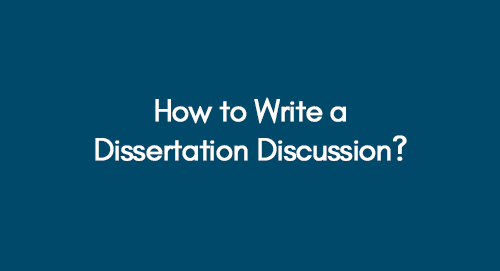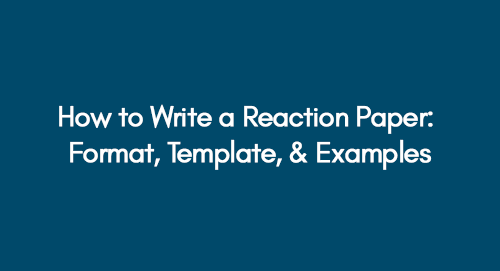
How to Write a Dissertation Discussion?| Tips and Tricks
August 14, 2022
How to Write a Dissertation Proposal?|Pointers and Techniques
August 16, 2022Doctoral dissertations typically require a literature review, which should integrate prior research in the field, highlight relevant established points, assess other scholars' work, and synthesize it with your analysis.
Learn about Writing Literature Review Here
Dissertation literature reviews validate research sources comprehensively and concisely encapsulate gathered information. Crafting them can be perplexing due to the lack of a fixed approach, with variables such as dissertation title, methodology, and sources influencing the content.
Explore the Importance of Literature Reviews and Their Ultimate Goal Here
A literature review is vital for academic research, providing essential evidence and a theoretical foundation. It guides analysis, supports findings, and is integral to comprehensive dissertation research.
Critically summarize chosen project management articles like concise essays. Evaluate research and theory synthesis in journal article introductions. Unravel the secrets to crafting an impactful dissertation literature review with our step-by-step guide on 'how to write a dissertation literature review.
How to Write a Dissertation Literature Review: The Process
It is a 4-step process. Keep reading to know the journey.
1: Source Identification
Incorporating citations you find on the internet at random is not allowed. All sources must be identified. There is a chance you received guidelines from your professor(s), department head, or tutor. We will tell you how to choose the best sources in case you do not have any guidelines.
Use balanced sources: books, articles, dissertations (e.g., Google Scholar). Check citations to gauge importance. A citation indicates that an article is an important source and should be included in your literature review if it has been cited multiple times. Make a list of the sources before you begin your literature review.
2: Choosing Your Sources
Your dissertation research should be based on a list of appropriate sources. Shortlist the most suitable ones after studying all of them.
You are right; it is going to be exhausting and time-consuming. But will it be worth it? Hell, yeah!
It will take you a long time to read all of the research, books, and journals, so you should not start with that. The first step is to study the research questions or main aspects of your selected source concerning their relevance and importance. You should have the most relevant sources after you have completed the first stage.
Once you have enough sources to cover your literature review, you can move on to reading the abstracts of the shortlisted sources. Your literature review chapter should only include sources that are the most important and most relevant. After the second stage, if there are still not enough sources, repeat the first and second stages.
3: Gap Analysis
When choosing a dissertation topic, aim to contribute something new to the field. Avoid copying old research. List your sources, then identify gaps between them. Research gaps are unanswered questions. This guides your research goal. Use these gaps to build a strong literature review. Crafting excellent dissertation topics is challenging but feasible. After gathering sources and spotting gaps, start writing. The literature review has three key sections.
4: Writing the Literature Review
Having established what your literature review should contain, let's move forward. The most astounding dissertation literature review is about to be taught to you. Literature review chapters are usually the longest, so their templates are huge. You can find the formula for creating a perfect dissertation literature review template below.
There are three major sections in the literature review chapter:
- Introduction
- Main Body
- Conclusion
1. Introduction
You must first write such an intriguing and captivating introduction that a reader is compelled to read your entire dissertation.
Introduce your literature review with its objectives for an eye-catching introduction. Starting with the problem or question of your research will help you accomplish this flawlessly. After you have reviewed all the sources for your literature review, write a concise summary of what you have learned.
Make sure you highlight all the gaps in your introduction and state what approach you will use to fill them in your dissertation in order to finish it off like a boss.
2. Main Body
You should devote the most time and effort to this section since it is the most important part of your dissertation.
An overview of the sources
Identify all the major findings related to each source after analyzing it. The first question you need to ask yourself is; how has the source improved or changed your research? Does this source have a research gap or was it helpful?
You can easily summarize the sources by asking these questions.
Analyzing the Sources
An important part of your literature review is evaluating the sources you use, but how do you do that? It is easy!
It is necessary to discuss the source in depth. You will gain more credibility if you give your opinion about the sources and prove that you have studied the subject and have sufficient background knowledge about it.
Analyzing the sources analytically is also important. This will help you determine the literature's strong and weak points. For each of the sources, you will need to state their weak points and strong points.
Establishing a Relationship Between Your Research Problem and Your Sources
In your literature review, you will need to establish a link between the research problem (dissertation topic) you are addressing and the sources you are reviewing. As a result, you will be able to demonstrate that the sources you are citing are relevant to your research and have an impact on it.
It is also possible to develop a relationship with the sources you've cited. Different literature sources you have cited should be analyzed for differences and similarities. Clarifying certain aspects as well as explaining conflicting sources.
Conclusion
Your literature review comes to an end here. No, you will not just be saying "bye-bye, the end" here or anywhere else (except when you are talking with someone who has been bugging you). This will not work.
It is important to have a conclusion that points your reader toward the following chapter (Methodology). The reader will be engaged with clarity and interest if you throw some bombs (not literal bombs).
Summarize source implications in your literature review's conclusion, tying them to your research question or argument. Congratulations, you've conquered your literature review chapter. It's lengthy, along with data collection and analysis, but not insurmountable. Despite the time and effort required, it's a rewarding endeavor.
FAQs About Literature Reviews
The purpose of the thesis, dissertation, or research paper is to situate your work within the existing body of knowledge.
It proves that you have researched your dissertation topic thoroughly. It shows that you have a thorough understanding of the background of your research and sufficient evidence to support it. Your literature review is your dissertation's backbone as it serves as proof that your arguments are valid and that the dissertation is relevant to the reader(s).
The purpose of a literature review is to connect it to an existing body of knowledge, research, and theories. Each of the citations will have to be examined to determine if they support your research, literature review, and predictions.
It is not acceptable to include anything in your dissertation that cannot be backed up or supported by theory unless it is highly relevant.
Get 3+ Free Dissertation Topics within 24 hours?













